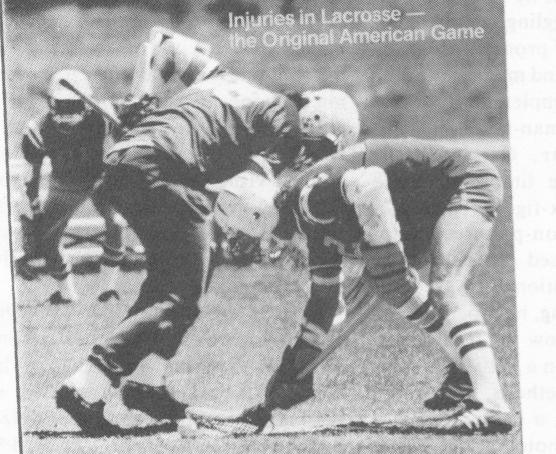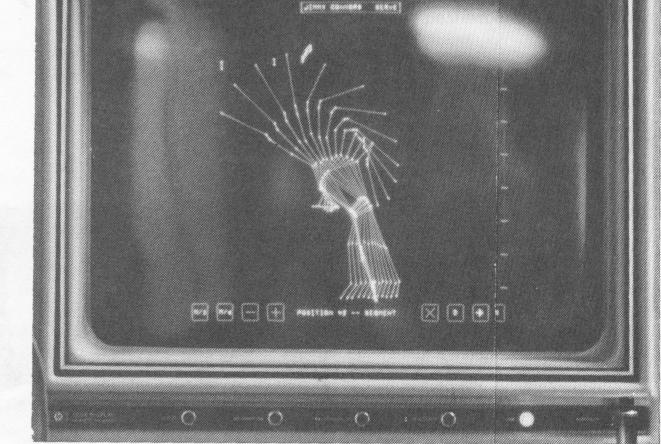| Index | Next |
![]()
David Whieldon
Investigators are now using the science of mechanics to study performance, conditioning, equipment, injuries, and the way the body moves.
A biomechanical rebus. The stop-action stick-figure is a computer's breakdown of the elements of tennis star Jimmy Connors' serve done in the laboratories of Computerized Biomechanical Analysis, Inc (see accompanying story).
B iomechanics is a slippery word to define. It's the application of principles from mechanics, engineering, physiology, and anatomy to the study of the human body in motion, but it also embraces detailed analyses of performance and efforts to improve performance by improving-scientifically-technique or equipment.
If this sounds a bit confusing, it's only because the field of biomechanics is sprawling, highly subspecialized, and rather hard to sort out-and only a fraction of all biomechanical effort is devoted to sports. Various researchers throughout the United States are
pursuing various goals, and as in any rapidly developing area of knowledge, they hold differing views of what biomechanists should be doing. Some have a strong theoretical and research bent, while others prefer practical applications. And some have a foot in each camp.
Probably the best definition of
biomechanics is the operant: biome. chanical research occurs when someone applies the principles of mechanical science to the study of a living system. In sports biomechanics the system is the athlete, and a sampling of sports biomechanics research in progress shows how diverse the discipline can be.
SPORTSMEDICINE May 1979



![]()
| Index | Next |